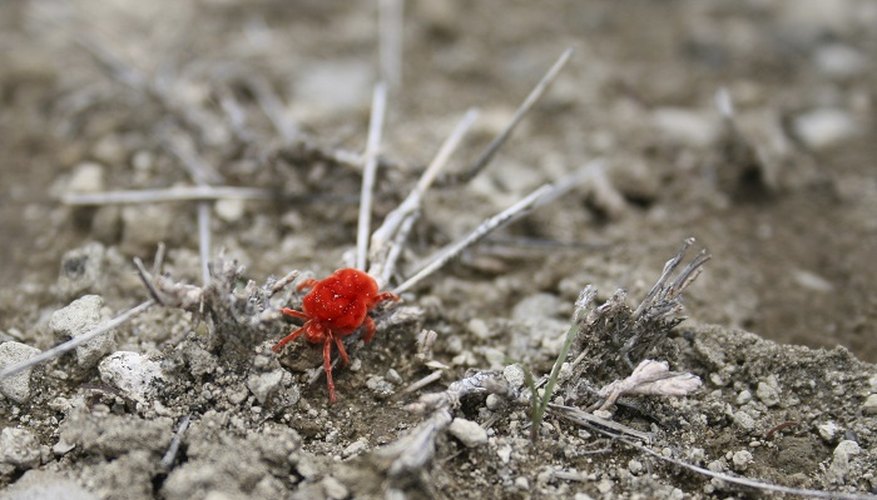The red mites you may see crawling around on your patio, garden path or driveway are no cause for alarm for yourself as they are more than likely adult clover mites or chigger mites. While their numbers may be impressive, neither bite nor transmit disease. However, clover mites may be a problem if you have certain plants in your garden.
Chigger mites
When most people think of chiggers, they tend to think of the tiny, biting creatures that can make you miserable during a summer's hike or walk through tall grass. In actuality, the chiggers that bite humans and animals are the larval stage of these mites. The adults feed on insect eggs and insects, and do not bite people. In their adult form, you often can find them crawling around on concrete. Adults are typically bright red with hairy bodies. They only measure about 1.2 mm (1/20 inch) long and move quickly.
- When most people think of chiggers, they tend to think of the tiny, biting creatures that can make you miserable during a summer's hike or walk through tall grass.
- The adults feed on insect eggs and insects, and do not bite people.
Clover mites
Clover mites are reddish-brown and travel at a sluggish pace. Adults measure 0.8 mm (1/30 inch), but their young are much smaller and bright red. Clover mites feed on grasses, dandelions, strawberries and irises, among other plants. Often, they will congregate in large numbers on concrete. As the weather gets cooler, the mites will hide under portions of your home including window and door frames or sometimes in your home. Once inside your home, they will become a nuisance simply because of their large numbers. They do not transmit diseases or bite, but you will more than likely notice them on light-coloured floors, curtains or other soft furnishings. If you crush one of these mites, it will leave a red, blood-like stain.
- Clover mites are reddish-brown and travel at a sluggish pace.
- They do not transmit diseases or bite, but you will more than likely notice them on light-coloured floors, curtains or other soft furnishings.
Prevention
For clover mites, remove all lush vegetation from the perimeter of your home, trying to leave at least 46 cm (18 inches) between your house and the start of your lawn or flower beds. This helps because clover mites cannot as quickly crawl across bare soil as they can crawl up a blade of grass onto brick or concrete. If you would like plants closer to your home instead of this bare strip of soil, you can use plants that are unattractive to the mites such as junipers, barberry, salvia, marigolds or chyrsanthemums. For chigger mites, consider mowing or otherwise removing any thick vegetation from around your home. Use an insect repellent when travelling through thick, tall grasses and tuck your clothes into your boots and trousers.
- For clover mites, remove all lush vegetation from the perimeter of your home, trying to leave at least 46 cm (18 inches) between your house and the start of your lawn or flower beds.
Control
For clover mites, a variety of insecticides will help control their population. Chlorpyrifos, cyfluthrin, propoxur and pyrethrins are examples of insecticides for the clover mite. To control these pests, consider spraying the perimeter of your home during mite season to help keep them outside your house. For chigger mites, treat known areas of activity rather than large areas. To find out where chigger mites are active, consider placing 15 cm (6 inch) squares of black cardboard on end in the grass. You will soon see, within minutes, yellowish, pink or red dots climbing to the top of the cardboard if there are active chiggers. Treat this and other areas where you find the chiggers climbing the black cardboard.
- For clover mites, a variety of insecticides will help control their population.
- To control these pests, consider spraying the perimeter of your home during mite season to help keep them outside your house.
